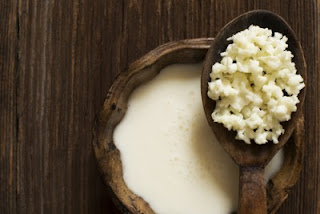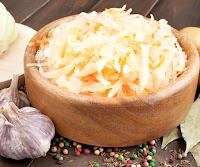A detox soup takes
many of the healthiest ingredients possible and puts them together in one pot.
They usually involve pureeing or blending the vegetables up, or at the very
least chopping them into bite-sized pieces. This makes the soup easy to digest
so your body can absorb and utilize all of the nutrients more easily. The best
part about these recipes is that the focus is still on taste, so you’re getting
a detox dose of vitamins and minerals without having to suffer through it.
Roasted Butternut
Squash and Apple Soup
Serves 8
Ingredients
2-3 pound butternut squash, cubed in 1-inch pieces
4 large sweet apples (such as Gala or Honeycrisp), cubed in 1-inch pieces
8 ounces mushrooms, cut in half
1 cup (about 4 stalks) celery, cut into 2-inch pieces
1 large onion, cut into fourths
1/4 cup olive oil
4 cups low-sodium chicken or vegetable broth
1 cup apple juice
2 teaspoons salt + extra to taste
1 teaspoon black pepper + extra to taste
1/2 teaspoon nutmeg
1 teaspoon cinnamon
1/2 teaspoon red pepper flakes, optional (for a little extra kick)
Pumpkin seeds, optional (for garnish)
4 large sweet apples (such as Gala or Honeycrisp), cubed in 1-inch pieces
8 ounces mushrooms, cut in half
1 cup (about 4 stalks) celery, cut into 2-inch pieces
1 large onion, cut into fourths
1/4 cup olive oil
4 cups low-sodium chicken or vegetable broth
1 cup apple juice
2 teaspoons salt + extra to taste
1 teaspoon black pepper + extra to taste
1/2 teaspoon nutmeg
1 teaspoon cinnamon
1/2 teaspoon red pepper flakes, optional (for a little extra kick)
Pumpkin seeds, optional (for garnish)
Instructions
Preheat oven to 425 degrees F (220 degrees C).
In a large bowl, mix together the butternut squash and onion
with 1/8 cup of olive oil. Stir to coat evenly. Place the vegetables in a large
baking pan and bake for 30-40 minutes, or until squash is fork tender.
Meanwhile, mix together the apples and mushrooms with the
remaining olive oil. Place on another baking pan and bake for 15-20 minutes, or
until soft and fragrant.
In a large soup pot, place roasted vegetables and add chicken
broth and apple juice. Using a an immersion blender, puree vegetables
(alternatively, you may use a blender and puree vegetables with the liquid.
This may take 2-3 batches). If the soup is too thick, additional chicken broth
or water can be added to thin it out to your desired consistency. Simmer the
soup over medium-low heat and season with spices, adding more or less to suit
your taste.
Serve warm and garnish with pumpkin seeds, parsley or thyme,
and a splash of cream.
Detox Green Soup
Recipe with Broccoli, Spinach and Ginger
Broccoli is one of the most healthy foods
you can eat, and so is spinach, and both get called to the line of duty on this
recipe. Just one would be enough to get the detox job done, but when you have
them both working in conjunction with each other, it’s almost too much of a
good thing. Since some struggle with the thought of having to eat either
broccoli or spinach, don’t fret: there is parsley, garlic, and onions to help
with the taste and also to add bonus nutrients, as if it needed any.
This easy detox soup can be thin or thick, depending upon the
amount of water you add.
Serves 4.
Ingredients:
2 teaspoons olive oil or coconut oil
2 cloves of garlic, chopped
2 tablespoons diced onion
1 inch of fresh ginger, peeled and chopped
4 cups fresh broccoli, cut up
1/2 pound of fresh spinach leaves
3 parsnips, peeled, cored, chopped
2 ribs of celery, trimmed, chopped
A handful of fresh parsley, roughly chopped
Fresh water, as needed
Sea salt and ground pepper, to taste
Lemon or lime juice
Instructions:
Using a large soup pot, heat the oil over medium heat and stir in the garlic, onion, and ginger to season the oil. Add the broccoli, spinach, parsnips, celery and parsley, and stir a bit until the spinach wilts and collapses. Add just enough water to cover the vegetables. Remember the spinach will cook down quite a bit, so don't add too much water at first. You can always thin the soup later, if you need to.
Bring to a high simmer, cover the pot, and reduce the heat to a medium simmer. Cook for fifteen minutes or so until the veggies are softened.
Use an immersion blender to puree the soup.
Options:
To make this a creamy (and still non-dairy) soup add a good dash of light coconut milk.
Beans and Greens Soup
2 teaspoons olive oil or coconut oil
2 cloves of garlic, chopped
2 tablespoons diced onion
1 inch of fresh ginger, peeled and chopped
4 cups fresh broccoli, cut up
1/2 pound of fresh spinach leaves
3 parsnips, peeled, cored, chopped
2 ribs of celery, trimmed, chopped
A handful of fresh parsley, roughly chopped
Fresh water, as needed
Sea salt and ground pepper, to taste
Lemon or lime juice
Instructions:
Using a large soup pot, heat the oil over medium heat and stir in the garlic, onion, and ginger to season the oil. Add the broccoli, spinach, parsnips, celery and parsley, and stir a bit until the spinach wilts and collapses. Add just enough water to cover the vegetables. Remember the spinach will cook down quite a bit, so don't add too much water at first. You can always thin the soup later, if you need to.
Bring to a high simmer, cover the pot, and reduce the heat to a medium simmer. Cook for fifteen minutes or so until the veggies are softened.
Use an immersion blender to puree the soup.
Options:
To make this a creamy (and still non-dairy) soup add a good dash of light coconut milk.
Beans and Greens Soup
Many times beans are overlooked as a detox food, because the
thought is that only fruits and vegetables can detox the body. But beans have a
good amount of fiber and are usually able to aid in digestion if they are
cooked properly and eaten in correct portions. In this case they’re using
cannellini beans, but you could substitute those with whichever beans you
happen to have on hand. The other ingredients highlight the subtle flavor of
the beans, while providing additional textures and tastes.
Serves 5-7
Ingredients
Ingredients
3/4 cup dry cannellini beans
2 tablespoons olive oil
1 onion, finely diced
4-8 cloves garlic, minced (I like a lot)
1.5 teaspoons sea salt
1 teaspoon black pepper
2 bay leaves
1 teaspoon fresh thyme
2 teaspoons tomato paste
6-7 cups water
4 cups collard greens, finely shredded
fresh parsley to garnish (optional)
grated parmesan to garnish (optional non-vegan garnish)
Instructions
Cover beans with about 3 cups of cold water. Cover and let soak overnight.
Drain and rinse beans. Set aside. (skip steps 1&2 if using canned beans)
In large stockpot, heat olive oil on medium heat. Add onion, saute for 5 minutes. Add garlic, and saute until mixture starts to turn golden brown. Add salt, pepper, thyme, bay leaf, and vegetable base. Stir, cooking for one more minute.
Add tomato paste, water, and beans. Stir to combine and bring to a boil. Reduce heat to medium low, cover, and cook for 20 minutes.
Add greens, and continue to cook for 20 minutes or until beans are soft. Add water if soup becomes too thick.
Remove bay leaves. Garnish with chopped fresh parsley and grated parmesan. Serve with crusty bread.
Be Smart
It's time for DETOX











